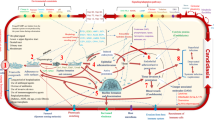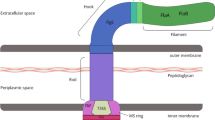Abstract
Cell cycle is a fundamental process underlying growth and development in evolutionarily diverse organisms, including fungi. In human fungal pathogens, cell cycle control generally determines their life cycles, either in the environment or during infections. Thus, cell cycle components can potentially serve as important targets for the development of antifungal strategy against fungal infections. Here, in Cryptococcus neoformans, the most common cause of fatal fungal meningitis, we show that a previously uncharacterized B-type cyclin named Cbc1 is essential for both its infectious and sexual cycles. We reveal that Cbc1 coordinates various sexual differentiation and molecular processes, including meiosis. Especially, the absence of Cbc1 abolishes formation of sexual spores in C. neoformans, which are presumed infectious particles. Cbc1 is also required for the major Cryptococcus pathogenic attributes. Virulence assessment using the murine model of cryptococcosis revealed that the cbc1 mutant is avirulent. Together, our results provide an important insight into how C. neoformans employs shared cell cycle regulation to coordinate its infectious and sexual cycles, which are considered crucial for virulence evolution and the production of infectious spores.
Similar content being viewed by others
References
Alberts, B., Johnson, A., Lewis, J., Raff, M., Roberts, K., and Walter, P.J.G. S. (2002). An overview of the cell cycle. In Molecular Biology of the Cell (New York: Garland Science).
Alspaugh, J.A. (2015). Virulence mechanisms and Cryptococcus neoformans pathogenesis. Fung Genet Biol 78, 55–58.
Bahn, Y.S., and Jung, K.W. (2013). Stress signaling pathways for the pathogenicity of Cryptococcus. Eukaryot Cell 12, 1564–1577.
Bardetti, P., Castanheira, S.M., Valerius, O., Braus, G.H., and Pérez-Martín, J. (2019). Cytoplasmic retention and degradation of a mitotic inducer enable plant infection by a pathogenic fungus. eLife 8, e48943.
Bloom, J., and Cross, F.R. (2007). Multiple levels of cyclin specificity in cell-cycle control. Nat Rev Mol Cell Biol 8, 149–160.
Botts, M.R., and Hull, C.M. (2010). Dueling in the lung: how Cryptococcus spores race the host for survival. Curr Opin Microbiol 13, 437–442.
Brilhante, R.S.N., España, J.D.A., de Alencar, L.P., Pereira, V.S., Castelo-Branco, D.S.C.M., Pereira-Neto, W.A., Cordeiro, R.A., Sidrim, J.J.C., and Rocha, M.F.G. (2017). An alternative method for the analysis of melanin production in Cryptococcus neoformans sensu lato and Cryptococcus gattii sensu lato. Mycoses 60, 697–702.
Brown, G.D., Denning, D.W., Gow, N.A.R., Levitz, S.M., Netea, M.G., and White, T.C. (2012). Hidden killers: human fungal infections. Sci Transl Med 4, 165rv13.
Chen, J., Zhou, S., Wang, Q., Chen, X., Pan, T., and Liu, H. (2000). Crk1, a novel Cdc2-related protein kinase, is required for hyphal development and virulence in Candida albicans. Mol Cell Biol 20, 8696–8708.
Cooper, G.M. (2000). The eukaryotic cell cycle. In The Cell: A Molecular Approach (Sunderland (MA): Sinauer Associates).
DeCesare, J.M., and Stuart, D.T. (2012). Among B-type cyclins only CLB5 and CLB6 promote premeiotic S phase in Saccharomyces cerevisiae. Genetics 190, 1001–1016.
Dirick, L., Goetsch, L., Ammerer, G., and Byers, B. (1998). Regulation of meiotic S phase by Ime2 and a Clb5,6-associated kinase in Saccharomyces cerevisiae. Science 281, 1854–1857.
Fan, Y., and Lin, X. (2018). Multiple applications of a transient CRISPR-Cas9 coupled with electroporation (TRACE) system in the Cryptococcus neoformans species complex. Genetics 208, 1357–1372.
Fay, D.S. (2005). The cell cycle and development: lessons from C. elegans. Semin Cell Dev Biol 16, 397–406.
Fraser, J.A., Giles, S.S., Wenink, E.C., Geunes-Boyer, S.G., Wright, J.R., Diezmann, S., Allen, A., Stajich, J.E., Dietrich, F.S., Perfect, J.R., et al. (2005). Same-sex mating and the origin of the Vancouver Island Cryptococcus gattii outbreak. Nature 437, 1360–1364.
Fu, C., Sun, S., Billmyre, R.B., Roach, K.C., and Heitman, J. (2015). Unisexual versus bisexual mating in Cryptococcus neoformans: Consequences and biological impacts. Fung Genet Biol 78, 65–75.
Fu, J., Morris, I.R., and Wickes, B.L. (2013). The production of monokaryotic hyphae by Cryptococcus neoformans can be induced by high temperature arrest of the cell cycle and is independent of same-sex mating. PLoS Pathog 9, e1003335.
Fukada, F., Kodama, S., Nishiuchi, T., Kajikawa, N., and Kubo, Y. (2019). Plant pathogenic fungi Colletotrichum and Magnaporthe share a common G1 phase monitoring strategy for proper appressorium development. New Phytol 222, 1909–1923.
Fukada, F., and Kubo, Y. (2015). Colletotrichum orbiculare regulates cell cycle G1/S progression via a two-component GAP and a GTPase to establish plant infection. Plant Cell 27, 2530–2544.
Galitski, T., Saldanha, A.J., Styles, C.A., Lander, E.S., and Fink, G.R. (1999). Ploidy regulation of gene expression. Science 285, 251–254.
García-Rodas, R., Cordero, R.J.B., Trevijano-Contador, N., Janbon, G., Moyrand, F., Casadevall, A., and Zaragoza, O. (2014). Capsule growth in Cryptococcus neoformans is coordinated with cell cycle progression. mBio 5, e00945.
García-Rodas, R., Trevijano-Contador, N., Román, E., Janbon, G., Moyrand, F., Pla, J., Casadevall, A., and Zaragoza, O. (2015). Role of Cln1 during melanization of Cryptococcus neoformans. Front Microbiol 6, 798.
Giles, S.S., Dagenais, T.R.T., Botts, M.R., Keller, N.P., and Hull, C.M. (2009). Elucidating the pathogenesis of spores from the human fungal pathogen Cryptococcus neoformans. Infect Immun 77, 3491–3500.
Gunbin, K.V., Suslov, V.V., Turnaev, I.I., Afonnikov, D.A., and Kolchanov, N.A. (2011). Molecular evolution of cyclin proteins in animals and fungi. BMC Evol Biol 11, 224.
Heitman, J., Carter, D.A., Dyer, P.S., and Soll, D.R. (2014). Sexual reproduction of human fungal pathogens. Cold Spring Harb Perspect Med 4, a019281.
Huang, M., and Hull, C.M. (2017). Sporulation: how to survive on planet Earth (and beyond). Curr Genet 63, 831–838.
Idnurm, A., Bahn, Y.S., Nielsen, K., Lin, X., Fraser, J.A., and Heitman, J. (2005). Deciphering the model pathogenic fungus Cryptococcus neoformans. Nat Rev Microbiol 3, 753–764.
Jung, K.W., Yang, D.H., Maeng, S., Lee, K.T., So, Y.S., Hong, J., Choi, J., Byun, H.J., Kim, H., Bang, S., et al. (2015). Systematic functional profiling of transcription factor networks in Cryptococcus neoformans. Nat Commun 6, 6757.
Kaur, J.N., and Panepinto, J.C. (2016). Morphotype-specific effector functions of Cryptococcus neoformans PUM1. Sci Rep 6, 23638.
Kelliher, C.M., and Haase, S.B. (2017). Connecting virulence pathways to cell-cycle progression in the fungal pathogen Cryptococcus neoformans. Curr Genet 63, 803–811.
Kelliher, C.M., Leman, A.R., Sierra, C.S., and Haase, S.B. (2016). Investigating conservation of the cell-cycle-regulated transcriptional program in the fungal pathogen, Cryptococcus neoformans. PLoS Genet 12, e1006453.
Kozel, T.R. (1995). Virulence factors of Cryptococcus neoformans. Trends Microbiol 3, 295–299.
Kwon-Chung, K.J. (1976). Morphogenesis of Filobasidiella Neoformans, the sexual state of Cryptococcus Neoformans. Mycologia 68, 821–833.
Lin, X., Hull, C.M., and Heitman, J. (2005). Sexual reproduction between partners of the same mating type in Cryptococcus neoformans. Nature 434, 1017–1021.
Liu, L., He, G.J., Chen, L., Zheng, J., Chen, Y., Shen, L., Tian, X., Li, E., Yang, E., Liao, G., et al. (2018). Genetic basis for coordination of meiosis and sexual structure maturation in Cryptococcus neoformans. eLife 7, e38683.
Liu, T.B., Wang, Y., Stukes, S., Chen, Q., Casadevall, A., and Xue, C. (2011). The F-Box protein Fbp1 regulates sexual reproduction and virulence in Cryptococcus neoformans. Eukaryot Cell 10, 791–802.
Ni, M., Feretzaki, M., Li, W., Floyd-Averette, A., Mieczkowski, P., Dietrich, F.S., and Heitman, J. (2013). Unisexual and heterosexual meiotic reproduction generate aneuploidy and phenotypic diversity de novo in the yeast Cryptococcus neoformans. PLoS Biol 11, e1001653.
Pérez-Martín, J., Bardetti, P., Castanheira, S., de la Torre, A., and Tenorio-Gómez, M. (2016). Virulence-specific cell cycle and morphogenesis connections in pathogenic fungi. Semin Cell Dev Biol 57, 93–99.
Raithatha, S.A., and Stuart, D.T. (2008). The Saccharomyces cerevisiae CLB5 promoter contains two middle sporulation elements (MSEs) that are differentially regulated during sporulation. Yeast 25, 259–272.
Rajasingham, R., Smith, R.M., Park, B.J., Jarvis, J.N., Govender, N.P., Chiller, T.M., Denning, D.W., Loyse, A., and Boulware, D.R. (2017). Global burden of disease of HIV-associated cryptococcal meningitis: an updated analysis. Lancet Infect Dis 17, 873–881.
Rodrigues, M.L., Alviano, C.S., and Travassos, L.R. (1999). Pathogenicity of Cryptococcus neoformans: virulence factors and immunological mechanisms. Microb Infect 1, 293–301.
Ryder, L.S., and Talbot, N.J. (2015). Regulation of appressorium development in pathogenic fungi. Curr Opin Plant Biol 26, 8–13.
San Filippo, J., Sung, P., and Klein, H. (2008). Mechanism of eukaryotic homologous recombination. Annu Rev Biochem 77, 229–257.
Saunders, D.G.O., Aves, S.J., and Talbot, N.J. (2010). Cell cycle-mediated regulation of plant infection by the rice blast fungus. Plant Cell 22, 497–507.
Schafer, K.A. (1998). The cell cycle: a review. Vet Pathol 35, 461–478.
Sun, S., Billmyre, R.B., Mieczkowski, P.A., and Heitman, J. (2014). Unisexual reproduction drives meiotic recombination and phenotypic and karyotypic plasticity in Cryptococcus neoformans. PLoS Genet 10, e1004849.
Sun, S., Coelho, M.A., David-Palma, M., Priest, S.J., and Heitman, J. (2019). The evolution of sexual reproduction and the mating-type locus: links to pathogenesis of Cryptococcus human pathogenic fungi. Annu Rev Genet 53, 417–444.
Tanaka, R., Taguchi, H., Takeo, K., Miyaji, M., and Nishimura, K. (1996). Determination of ploidy in Cryptococcus neoformans by flow cytometry. Med Mycol 34, 299–301.
Tian, X., He, G.J., Hu, P., Chen, L., Tao, C., Cui, Y.L., Shen, L., Ke, W., Xu, H., Zhao, Y., et al. (2018). Cryptococcus neoformans sexual reproduction is controlled by a quorum sensing peptide. Nat Microbiol 3, 698–707.
Velagapudi, R., Hsueh, Y.P., Geunes-Boyer, S., Wright, J.R., and Heitman, J. (2009). Spores as infectious propagules of Cryptococcus neoformans. Infect Immun 77, 4345–4355.
Wang, L., and Lin, X. (2011). Mechanisms of unisexual mating in Cryptococcus neoformans. Fung Genet Biol 48, 651–660.
Wang, L., Tian, X., Gyawali, R., and Lin, X. (2013). Fungal adhesion protein guides community behaviors and autoinduction in a paracrine manner. Proc Natl Acad Sci USA 110, 11571–11576.
Wang, L., Tian, X., Gyawali, R., Upadhyay, S., Foyle, D., Wang, G., Cai, J. J., and Lin, X. (2014). Morphotype transition and sexual reproduction are genetically associated in a ubiquitous environmental pathogen. PLoS Pathog 10, e1004185.
Wang, L., Zhai, B., and Lin, X. (2012). The link between morphotype transition and virulence in Cryptococcus neoformans. PLoS Pathog 8, e1002765.
Wittenberg, C., and Reed, S.I. (2005). Cell cycle-dependent transcription in yeast: promoters, transcription factors, and transcriptomes. Oncogene 24, 2746–2755.
Yamashita, A., Sakuno, T., Watanabe, Y., and Yamamoto, M. (2017). Analysis of Schizosaccharomyces pombe Meiosis. Cold Spring Harb Protoc 2017(9), pdb.top079855.
Zhao, Y., Lin, J., Fan, Y., and Lin, X. (2019). Life cycle of Cryptococcus neoformans. Annu Rev Microbiol 73, 17–42.
Zheng, X., Wang, Y., and Wang, Y. (2004). Hgc1, a novel hypha-specific G1 cyclin-related protein regulates Candida albicans hyphal morphogenesis. EMBO J 23, 1845–1856.
Acknowledgements
We would like to thank Dr. Guang-Jun He for critical reading and helpful suggestions. This work was financially supported by the National Science and Technology Major Project (2018ZX10101004), the Key Research Program of the Chinese Academy of Sciences (QYZDB-SSW-SSMC040), and the National Natural Science Foundation of China (31770163).
Author information
Authors and Affiliations
Corresponding author
Additional information
Compliance and ethics
The author(s) declare that they have no conflict of interest. The mouse experimental design and protocols used in this study were approved by the Regulation of the Institute of Microbiology, Chinese Academy of Sciences of Research Ethics Committee (permit No. SQIM-CAS007). All mouse experimental procedures were performed in accordance with the Regulations for the Administration of Affairs Concerning Experimental Animals approved by the State Council of People’s Republic of China.
Electronic Supplementary Material
Rights and permissions
About this article
Cite this article
Hu, P., Liu, L., Ke, W. et al. A cyclin protein governs the infectious and sexual life cycles of Cryptococcus neoformans. Sci. China Life Sci. 64, 1336–1345 (2021). https://doi.org/10.1007/s11427-020-1697-3
Received:
Accepted:
Published:
Issue Date:
DOI: https://doi.org/10.1007/s11427-020-1697-3




